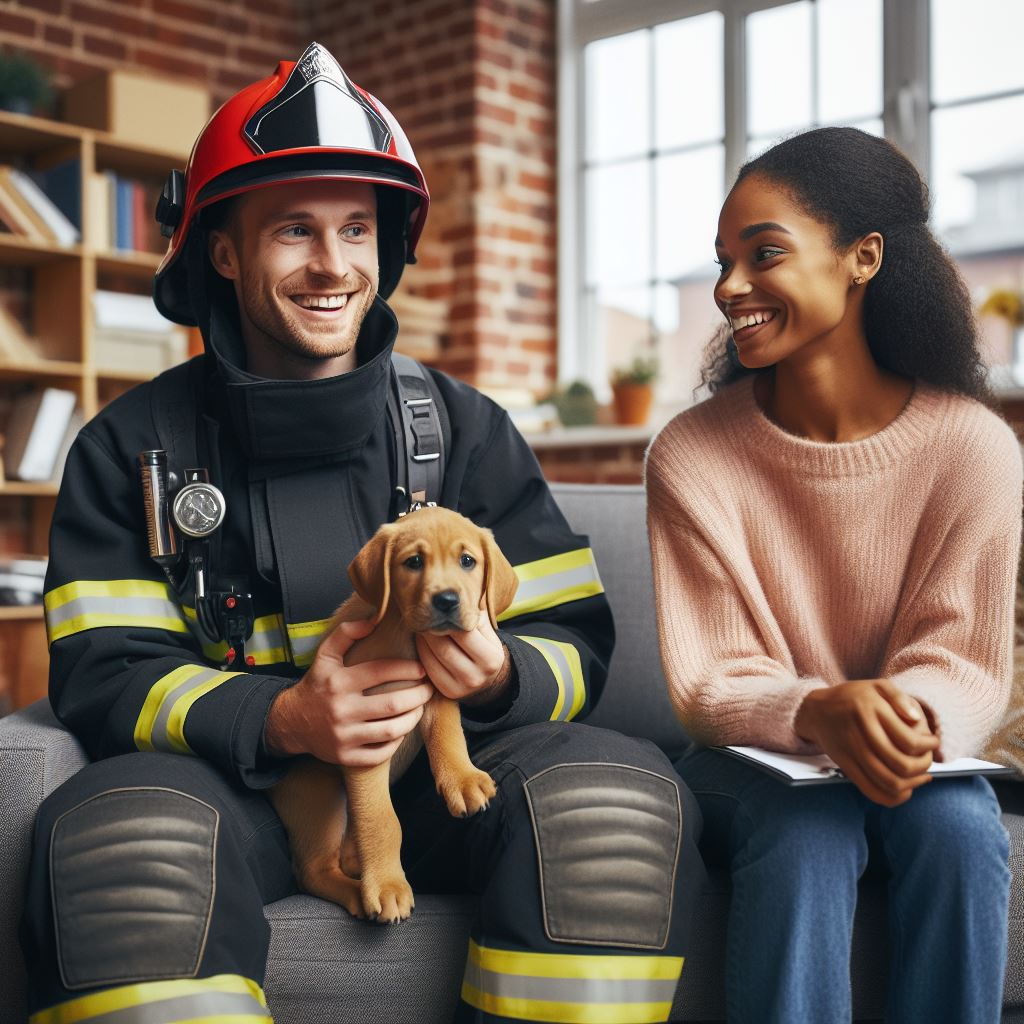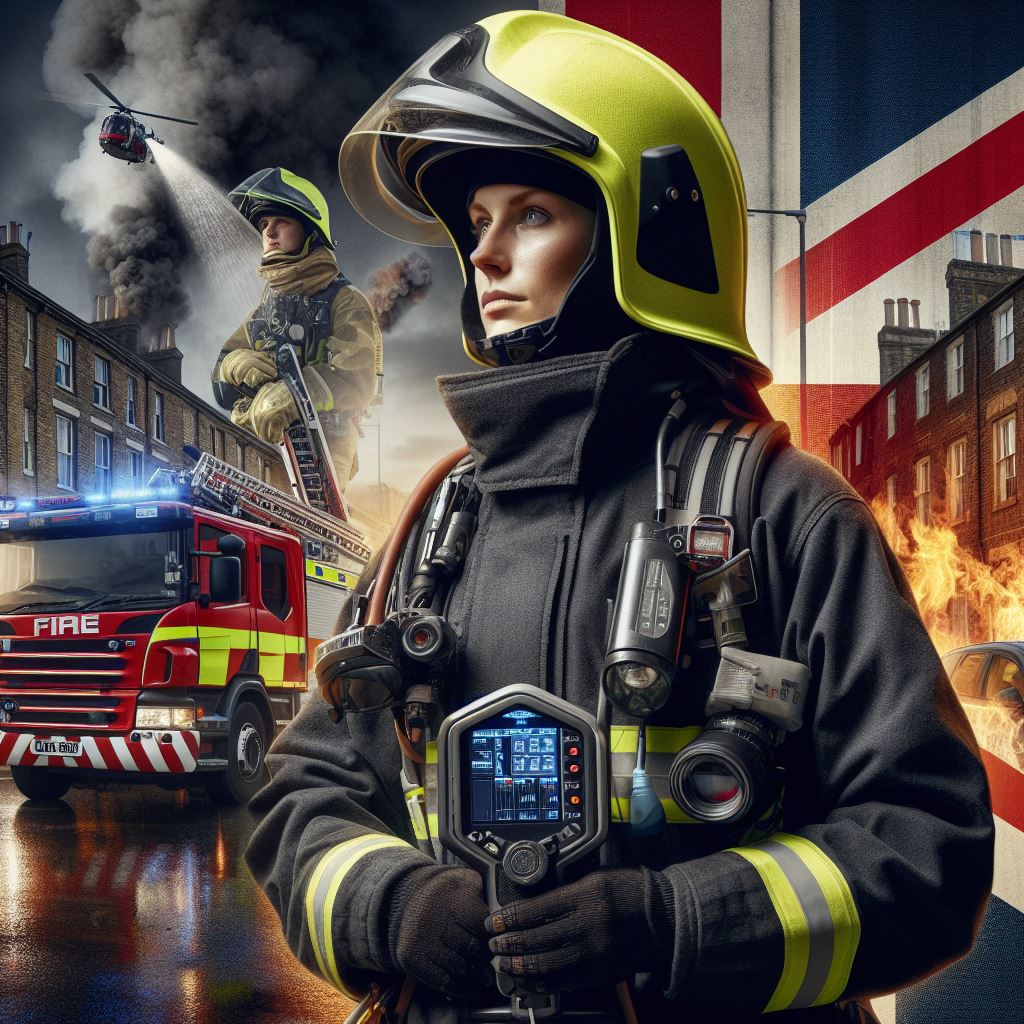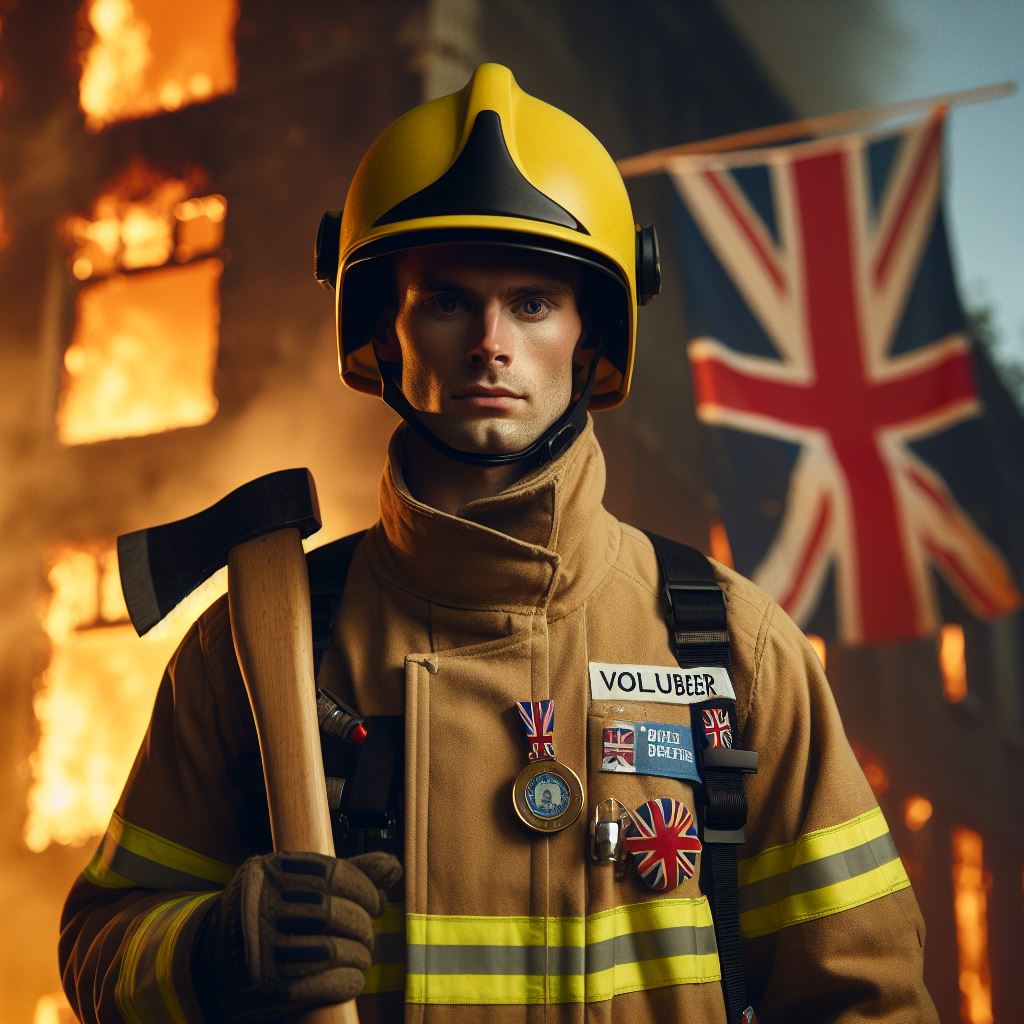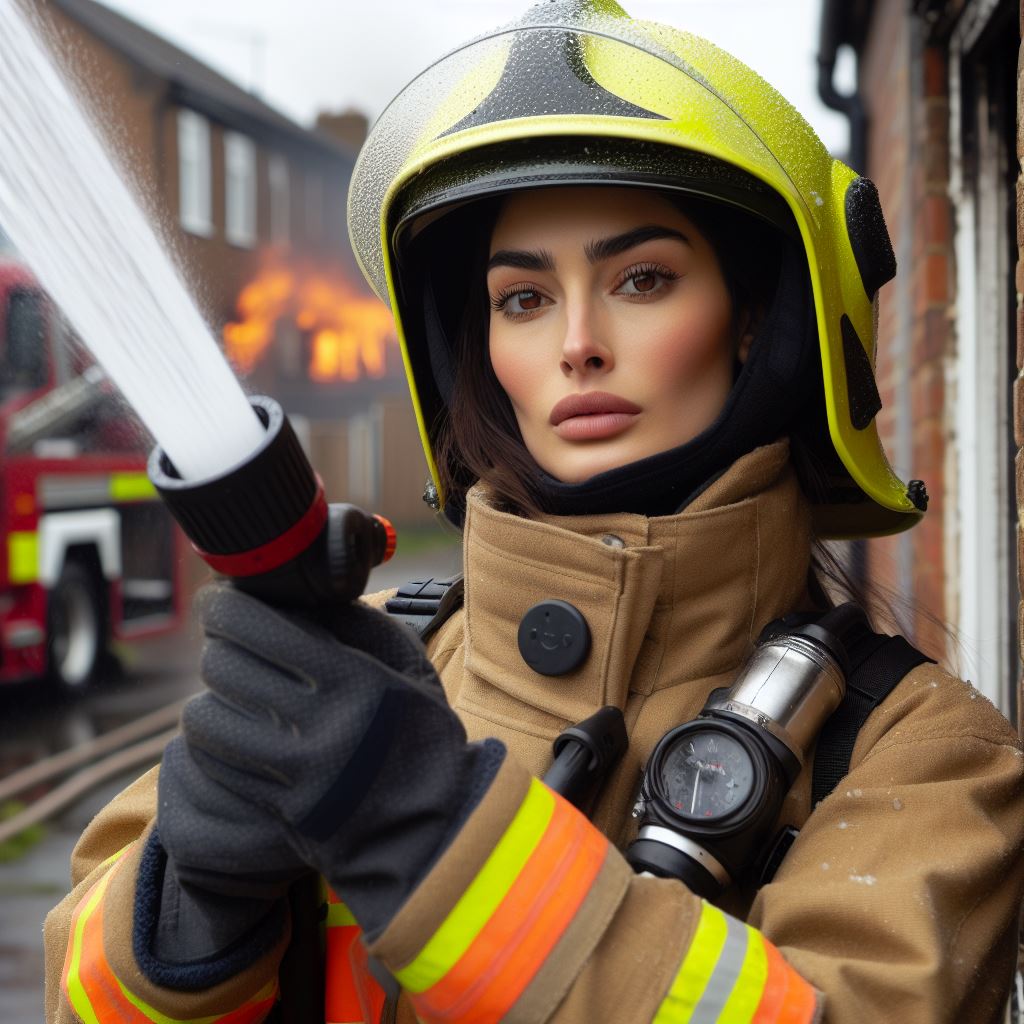Introduction
Firefighter Fire Safety Education in the UK is crucial for the public’s well-being and prevention of fire incidents.
Firefighters play a vital role in educating individuals about fire safety.
This section will discuss the importance of fire safety and how firefighters contribute to public education.
Fire safety education is of utmost importance as it equips individuals with the necessary knowledge and skills to prevent and handle fire emergencies.
Firefighters act as educators, teaching the public about fire hazards, preventive measures, and evacuation procedures.
This section will explore the significance of fire safety education, highlighting the role of firefighters in educating the public through various initiatives and programs.
Role of Firefighters in Fire Safety Education
The primary role of firefighters in fire safety education is to educate the public on preventive measures and promote awareness about fire hazards.
Educating the public on fire prevention measures
Firefighters play a crucial role in teaching individuals about fire prevention measures.
They conduct workshops, seminars, and presentations to raise awareness.
They educate people on the proper handling of fire hazards, like electrical appliances, flammable substances, and cigarette use.
Firefighters emphasize the importance of having functional smoke alarms, fire extinguishers, and proper escape plans in homes and public buildings.
Emphasizing the significance of firefighters’ expertise
Firefighters possess extensive knowledge and expertise in fire safety, making them reliable sources of information.
Their understanding of fire behavior, extinguishing techniques, and emergency protocol makes them effective teachers.
They can explain the science behind fire, its behavior in different situations, and the proper use of firefighting equipment.
Firefighters also have firsthand experience with the consequences of neglecting fire safety, making their lessons more impactful.
Personalized UK Career Consulting
Receive tailored career guidance designed just for you. Get actionable steps and expert support to boost your career in 1-3 days. Take control of your career now.
Get StartedExamples of activities or programs conducted by firefighters
- Fire station visits: Firefighters invite children and adults to visit fire stations, providing an opportunity to learn about fire safety equipment and their functions.
- Community outreach programs: Firefighters organize events to engage the community, offering hands-on experiences with firefighting equipment and demonstrations.
- School programs: Firefighters visit schools to conduct interactive sessions on fire safety, teaching students about fire prevention and what to do in an emergency.
- Fire safety campaigns: Firefighters engage in fire safety campaigns, distributing materials like brochures to actively raise awareness.
- Fire drills: Firefighters plan and execute fire drills in residential areas, schools, and workplaces to educate individuals about proper evacuation procedures.
- Fire safety talks: Firefighters speak at community centers, senior homes, and gatherings, educating the public on fire safety practices and preventive measures.
- Collaboration with local organizations: Firefighters collaborate with local organizations to organize workshops and training sessions, reaching a wider audience.
- Online resources: Firefighters create online resources, including videos and educational materials, to provide accessible information on fire safety.
Firefighters go beyond extinguishing fires; they actively work towards preventing fires and protecting lives through fire safety education efforts.
Their commitment to educating the public ensures that individuals are equipped with the knowledge and skills to prevent fire incidents and respond effectively to emergencies.
By promoting fire safety protocols and raising awareness, firefighters contribute significantly to creating safer communities and reducing the risks associated with fires.
Read: Women in UK Firefighting: Breaking Barriers
Firefighting Training and Certification
Firefighters play a crucial role in fire safety education, but before they can educate the public, they must undergo extensive training and obtain the necessary certifications.
Here is an overview of the training process and the qualifications required for firefighters to become qualified educators in fire safety:
Extensive Training Process
- Firefighters undergo rigorous training to prepare for the diverse challenges they may encounter during their careers.
- Firefighters start training in classrooms, acquiring theoretical knowledge on fire behavior, safety, and emergency response procedures.
- These theoretical classes cover topics such as fire chemistry, incident command systems, hazardous materials handling, and fire prevention strategies.
Practical Skills Development
- In addition to classroom instruction, firefighters receive practical training to develop their skills and abilities.
- This hands-on training involves exercises in simulated fire scenarios, allowing firefighters to apply their theoretical knowledge to real-life situations.
- They learn how to handle different firefighting equipment, effectively communicate in high-pressure situations, and collaborate as a team to achieve successful outcomes.
- Practical skills training also includes techniques for rescue operations, first aid, and using specialized equipment such as breathing apparatus and water pumps.
Hands-On Experience
- Firefighters also gain valuable experience through on-the-job training, which further enhances their understanding of fire safety practices.
- During this period, they work under the guidance of experienced firefighters and learn from their expertise and practical experience.
- This hands-on experience allows them to develop their problem-solving abilities, decision-making skills, and the ability to remain calm and composed in emergencies.
Importance of Ongoing Training
- Firefighting is a constantly evolving field, and firefighters must stay up-to-date with the latest fire safety techniques and information.
- Ongoing training ensures that firefighters remain knowledgeable about new firefighting equipment, updated safety protocols, and changes in fire behavior.
- By participating in regular training sessions and workshops, firefighters can continuously improve their skills and adapt to new challenges they may face on the job.
- Ongoing training also reinforces the importance of maintaining physical fitness, which is essential for firefighters to carry out their duties effectively.
Special Certifications and Qualifications
- Some firefighters pursue additional certifications and qualifications to enhance their fire safety education role.
- Special certifications may involve instructing in fire safety, expertise in areas like hazardous materials, technical rescue, or wildfire suppression.
- Additional qualifications equip firefighters to deliver specialized training and address unique fire safety challenges in their communities.
In short, firefighters undergo extensive training and certification to become qualified educators in fire safety.
The training process equips them with theoretical knowledge, practical skills, and hands-on experience.
Ongoing training ensures that firefighters stay updated with the latest fire safety techniques, and special certifications enhance their qualifications as fire safety educators.
By investing in training and certifications, firefighters play a vital role in educating the public and promoting fire safety within their communities.
Read: Understanding the UK’s Fire Service Ranks
Uncover the Details: UK Gov Officers: Dealing with the Public
Collaboration with Schools and Community Organizations
Partnerships between firefighters and local schools or community organizations
Firefighters play a crucial role in promoting fire safety education through partnerships with local schools and community organizations.
These collaborations are vital in spreading awareness and ensuring the safety of individuals, especially children, within the community.
Your Dream Job Starts with a Perfect CV
Get a tailored CV and cover letter that captures your unique strengths and stands out in your industry. Let us help you make an unforgettable first impression.
Get StartedHow firefighters visit schools to conduct fire safety presentations, workshops, and drills
One way firefighters actively engage with schools is by conducting fire safetypresentations, workshops, and drills.
These visits provide an opportunity for firefighters to educate students on the potential dangers of fire and teach them necessary skills to respond effectively in case of an emergency.
Importance of involving children in fire safety education and how firefighters tailor their teachings to different age groups
- It is of utmost importance to involve children in fire safety education.
- By educating them at a young age, firefighters empower children to become active participants in their own safety and the safety of their families and communities.
- Firefighters adapt their teachings to suit different age groups, ensuring that the information provided is age-appropriate and easy to understand.
- For younger children, firefighters use interactive and engaging methods like storytelling, videos, and games to deliver fire safety messages.
- By making the learning experience enjoyable, firefighters not only capture the children’s attention but also leave a lasting impact on their understanding of fire safety.
- As children grow older, firefighters introduce more practical aspects of fire safety, such as demonstrating how to use fire extinguishers or teaching basic first aid techniques.
- They also emphasize the importance of developing escape plans and conducting regular fire drills at home.
Examples of community outreach programs organized by firefighters
- In addition to the direct engagement with schools, firefighters organize various community outreach programs to promote fire safety awareness.
- Firefighters use these programs to engage with the public, sharing valuable information on fire prevention, emergency response, and home safety.
- Firefighters often organize open houses at fire stations, where community members can learn about fire safety equipment, tour the facilities, and ask questions to the firefighters.
- These events help foster relationships between the public and firefighters, enabling a sense of trust and cooperation within the community.
- Another example of community outreach is the distribution of informational pamphlets and brochures to households.
- Firefighters collaborate with schools, local businesses, and community centers to disseminate these resources, ensuring that fire safety messages reach a wider audience.
- Furthermore, firefighters actively participate in local events and festivals, setting up booths or fire safety demonstrations.
- They use these opportunities to engage with individuals of all ages and discuss the importance of fire safety in everyday life.
Generally, collaboration between firefighters and schools or community organizations plays a vital role in promoting fire safety education.
By conducting presentations, workshops, and drills in schools, firefighters actively involve children in their safety awareness.
Additionally, they organize community outreach programs that enable the spread of fire safety messages to a wider audience.
Through these collaborations, firefighters aim to create a society that is well-prepared, knowledgeable, and safe in the face of fire emergencies.
Read: Firefighter Fitness: Staying Fit for Duty in the UK
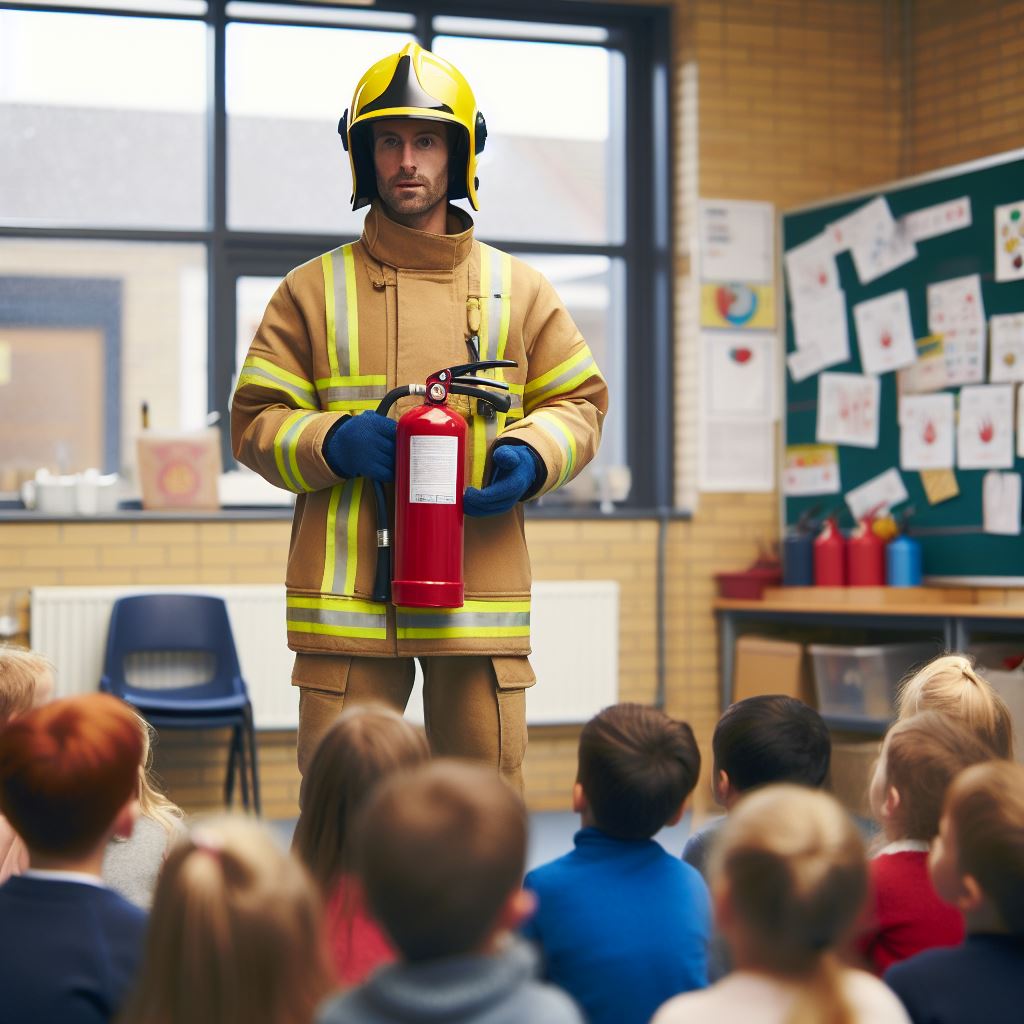
Fire Safety Campaigns and Resources
In the UK, firefighters play a crucial role in developing and implementing fire safety campaigns at both national and regional levels.
Through various resources, such as brochures, pamphlets, videos, and online platforms, they disseminate vital fire safety information to the public.
The Role of Firefighters in Fire Safety Campaigns
- Firefighters are not just first responders. They are also actively involved in preventing fires and educating the community about fire safety.
- They use their expertise to develop effective campaigns that raise awareness and change behaviors.
- By collaborating with local authorities and organizations, firefighters ensure that fire safety campaigns target the most vulnerable groups.
- They focus on areas with higher fire risks and tailor their messages to address specific safety concerns.
Effective Use of Various Resources
Firefighters utilize a wide range of resources to deliver fire safety information to the public.
Brochures and pamphlets are valuable tools that can be distributed during home safety visits or community events.
However, videos have become increasingly popular in recent years.
Fire and rescue services produce engaging videos that capture attention and convey important fire safety messages effectively.
These videos are shared on social media platforms, reaching a wider audience. Online platforms have revolutionized fire safety campaigns.
Optimize Your LinkedIn for Success
Boost your LinkedIn profile with a professional bio, keyword-rich headline, and strategic recommendations that attract recruiters. Stand out from the crowd and get noticed.
Optimize NowFirefighters use websites and social media channels to provide educational resources, interactive quizzes, and downloadable safety materials.
They also engage with the public through live chats and Q&A sessions.
Successful Campaigns and Initiatives
Several fire safety campaigns in the UK have achieved remarkable success in raising awareness and reducing fire incidents.
For example, the “Fire Kills” campaign, launched by the government and fire and rescue services, has been instrumental in educating the public about fire hazards in the home.
This campaign highlights simple precautions, such as fitting smoke alarms and planning escape routes, which have contributed to a significant decrease in fire-related fatalities.
Another notable initiative is the “Arson Reduction Strategy,” targeting deliberate fires.
Through collaborative efforts with communities, local authorities, and fire services, this campaign aims to reduce the number of arson incidents and increase public safety awareness.
Tips and Resources for Fire Safety Education
To enhance fire safety knowledge, individuals can access various resources:
- Visit local fire station websites for fire safety advice and information specific to their area.
- Download fire safety apps that provide tips and guidance on preventing fires and reacting properly in emergencies.
- Attend community workshops and fire safety demonstrations organized by local fire and rescue services.
- Watch educational videos and tutorials available on fire and Rescue Service YouTube channels.
- Read fire safety guides, brochures, and pamphlets available at local libraries, community centers, and public health offices.
Furthermore, individuals are encouraged to share acquired knowledge with family, friends, and neighbors to foster a fire-safe community.
Participate in fire safety campaigns and use available resources to collaborate with firefighters in creating a safer environment for all.
Read: The History of Firefighting in the United Kingdom
Conclusion
This blog post has highlighted the crucial role that firefighters play in fire safety education in the UK.
They are not only responsible for putting out fires but also for educating the community on fire prevention measures.
Firefighters actively engage with the public, disseminating vital information to raise awareness about fire risks and protective measures.
Readers must take fire safety seriously and be proactive in preventing fires in their daily lives.
Individuals can significantly reduce fire risk by actively implementing measures such as installing smoke detectors, practicing safe cooking habits, and establishing escape plans.
Support and participate in firefighters’ fire safety education initiatives to recognize and back the essential work carried out by these heroes.
They can contribute by attending fire safety workshops, supporting local fire departments, and spreading the knowledge gained to their family, friends, and communities.
Ultimately, let us all unite in our efforts to prevent fire incidents and protect lives.
Take action today by staying informed, following fire safety guidelines, and supporting the tireless work of firefighters in educating and safeguarding our communities.
Together, we can make a difference and ensure a safer and fire-free environment for all.
[E-Book for Sale]
500 Cutting-Edge Tech Startup Ideas for 2024 & 2025: Innovate, Create, Dominate
$19.99 • 500 Tech Startup Ideas • 62 pages
You will get inspired with 500 innovative tech startup ideas for 2024 and 2025, complete with concise descriptions to help you kickstart your entrepreneurial journey in AI, Blockchain, IoT, Fintech, and AR/VR.

